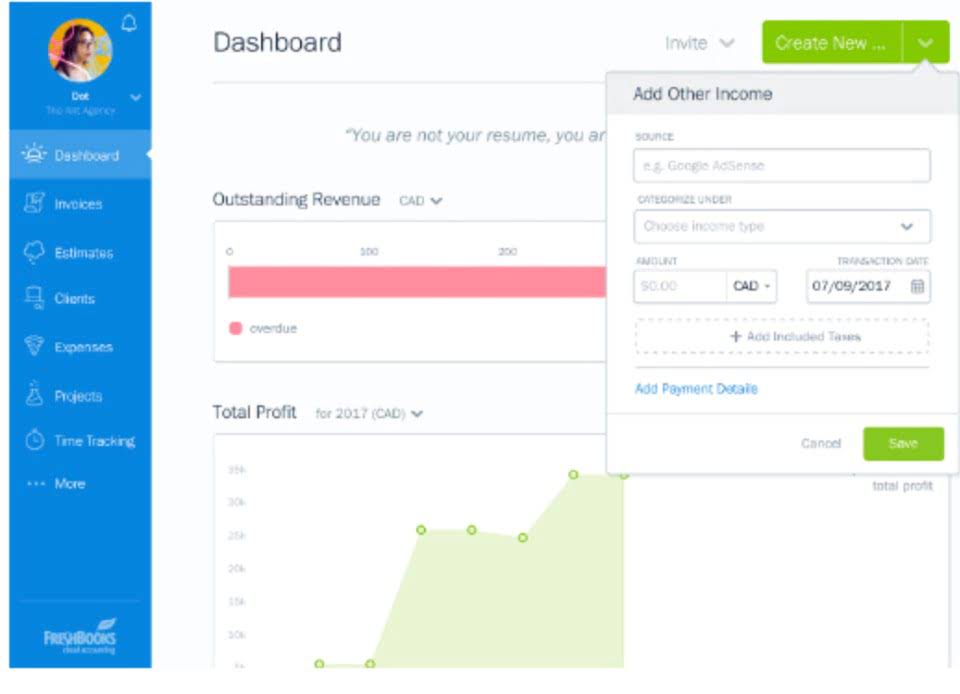
A business entity can have a negative retained earnings balance if it has been incurring net losses or distributing more dividends than what is there in the retained earnings account over the years. Cash dividends represent a cash outflow and are recorded as reductions in the cash account. These reduce the size of a company’s balance sheet and asset value as the company no longer owns part of its liquid assets.
Retained earnings vs. cash flow
- Thus, you’ll have a crystal-clear picture of how much money your company has kept within that specific period.
- The statement of retained earnings, often presented alongside the balance sheet, provides a detailed account of changes in retained earnings over a specific period.
- This means each shareholder now holds an additional number of shares of the company.
- Startups and high-growth companies typically retain a larger portion of their earnings to finance expansion and innovation.
- This compares the change in stock price with the earnings retained by the company.
- Companies will also usually issue a percentage of all their stock as a dividend (i.e. a 5% stock dividend means you’re giving away 5% of the company’s equity).
So, retained earnings are the profits of your business that remain after the dividend payments have been made to the shareholders since its inception. In financial modeling, it’s necessary to have a separate schedule for modeling retained earnings. The schedule uses a corkscrew-type calculation, where the current period opening balance is equal to the prior period closing balance. In between the opening and closing balances, the current period net income/loss is added and any dividends are deducted. Both revenue and retained earnings are important in evaluating a company’s financial health, but they highlight different aspects of the financial picture.
How do companies use Retained Earnings?
This is a good thing for those investors who are looking forward to more higher returns. Also, both the shareholders and management may decide to pay off the high-interest debt instead of rewarding investors with dividends. Generally, to be able to reach a win-win situation, company management often go for a balanced approach. This is where the management decides to allocate a small amount to dividend while retaining a significant amount. This way, the shareholders are able to benefit from the net earnings while the company retains some to reinvest in the business. To grasp the concept retained earnings represents of retained earnings, one must first understand how they are calculated.

What goes into a statement of retained earnings?

On the other hand, companies that retain a larger share of their earnings can reinvest in research and development, acquisitions, or Car Dealership Accounting other growth opportunities, potentially enhancing future profitability. Whenever a company accumulates profits, shareholders and management will always defer when in comes to its utilization. The investors may want to be given dividends as a return for investing in the company. However, the management may have a different opinion on how the net earnings should be utilized. They may want the surplus income to be retained so that it can be used to generate more returns.
Where to Find Retained Earnings in the Financial Statements
- They reflect the cumulative profits retained by the company over time, minus any dividends distributed to shareholders.
- Since the management is in a better position to understand the market and the company’s business, they may have a high growth projection insight.
- Presented with the income statement and balance sheet, it provides a comprehensive view of financial performance.
- The magnitude of retained earnings directly correlates with a company’s capacity to fund ongoing operations, embark on ambitious growth initiatives, and effectively manage its debt obligations.
- For example, management might decide to build up a cash reserve, repay debt, fund strategic investment projects or pay dividends to shareholders.
- This reinvestment into the company aims to achieve even more earnings in the future.
- To get a better understanding of what retained earnings can tell you, the following options broadly cover all possible uses that a company can make of its surplus money.
Ultimately, the company’s management and board of directors decides how to use retained earnings. Retained earnings, on the other hand, specifically refer to the portion of a company’s profits that remain within the business instead of being distributed to shareholders as dividends. When a company generates net income, it is typically recorded as a credit to the retained earnings account, increasing the balance. In contrast, when a company suffers a net loss or pays dividends, the retained earnings account is debited, reducing the balance. Revenue, net profit, and retained earnings are terms frequently used on a company’s balance sheet, but it’s important to understand their differences. When a company pays dividends to its shareholders, it reduces its retained earnings by the amount of dividends paid.

Retained Earnings: Definition, Calculation
A healthy amount of retained earnings indicates a stable and successful business, while a net loss or low retained earnings may contra asset account raise concerns about the company’s financial health. A balance sheet is a financial statement that provides a snapshot of a company’s financial position at a specific point in time. It consists of three main components – assets, liabilities, and shareholders’ equity. Retained earnings appear on the balance sheet under the shareholders’ equity section.
